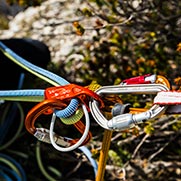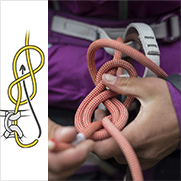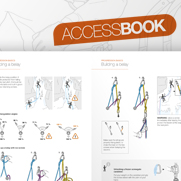Fall comparison with rigid/human mass
The tests presented above were designed to help us evaluate falls involving real people. For comparison, we redid the same series of falls based on the standard model: rigid mass with a GRIGRI 2 fixed to the anchor.
Warnings
- Carefully read the Instructions for Use used in this technical advice before consulting the advice itself. You must have already read and understood the information in the Instructions for Use to be able to understand this supplementary information.
- Mastering these techniques requires specific training. Work with a professional to confirm your ability to perform these techniques safely and independently before attempting them unsupervised.
- We provide examples of techniques related to your activity. There may be others that we do not describe here.
Factor 0.3
Factor 0.7
| Force on the anchor | |
| Force on the climber |
These tests revealed very significant differences between the two protocols: the force on the climber increases by up to 70% with a rigid mass.
These differences are explained by the many factors, other than the rope, that contribute to fall energy dissipation: the absorption of the two bodies, belayer displacement, rope slippage in the device...
Conclusion
These tests help us evaluate falls involving real people.
Such measurements necessarily carry a high degree of uncertainty, but help provide important information:
- The forces at work in a real fall differ greatly from the results of standard testing.
- In practice, factors other than the rope contribute to dissipating the energy of a fall.
- To understand a fall, one must take into account all of these factors and not focus only on the rope.
- It is difficult to control all of the factors that dissipate fall energy. However, it is easy to influence the potential for belayer displacement. Belayer displacement helps dissipate a significant part of the energy and thus limits the forces at work. On the ground, it is essential to allow displacement to occur for a dynamic belay. At the belay station, it is wise to use a long tether, when the situation allows it, to allow displacement to occur.









